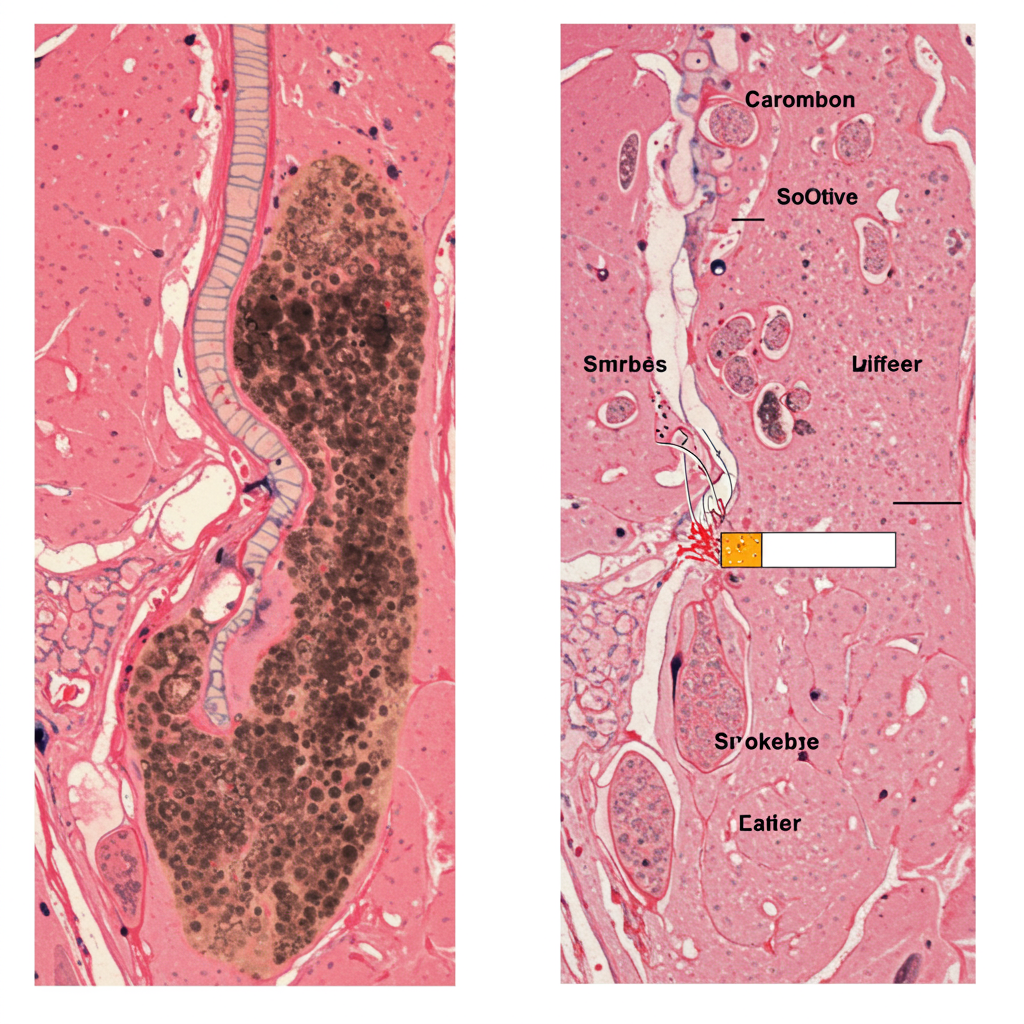Attention-Deficit/Hyperactivity Disorder (ADHD) is a widely recognized neurological condition. While often associated with restless children, the reality is far more complex: ADHD persists into adulthood, frequently presenting as a “silent struggle” that goes undiagnosed and profoundly impacts lives. This hidden battle is not a reflection of character flaws like laziness or lack of willpower; it stems from a brain that is wired differently, requiring unique support.
For many adults, like Rishi Tandon, a 29-year-old graphic designer in Bengaluru, the signs are subtle but constant. A typical workday might involve staring blankly at a screen, jumping between unrelated tasks, and feeling a surge of panic as deadlines loom unmet. Promises to finish tasks dissolve into hours lost in distraction. Friends might jest about being “scattered,” but internally, it feels like losing control. Rishi’s experience is a common, yet often invisible, reality for adults living with undiagnosed ADHD.
What is Adult ADHD? Beyond Childhood Stereotypes
ADHD is a common neurodevelopmental disorder originating in childhood that often continues throughout life. Unlike the stereotypical image of a hyperactive boy who can’t sit still, adult ADHD often presents differently. Many adults may not exhibit outward hyperactivity. Instead, they grapple with chronic inattention, forgetfulness, impulsivity, and significant challenges with emotional regulation.
The World Health Organization (WHO) reports that roughly 5 percent of children globally are diagnosed with ADHD. However, tracking prevalence, especially in adults, is challenging. A systematic review of global data since 2020 revealed wide variations due to diagnostic method differences. Surveys relying on self-reports sometimes show inflated rates, particularly in regions like Asia. More rigorous studies using clinical interviews report lower estimates, with low-risk studies showing child prevalence ranging from 3.2% in Sweden to 10.5% in the United States.
Diagnosis rates also vary significantly across regions due to gaps in healthcare, research, and professional training. In India, for example, a 2024 study indicated prevalence rates from 1.3% to 28.9% in children and 5.48% to 25.7% in adults. Many cases, particularly among females and minority groups, remain undiagnosed due to cultural barriers and inconsistent implementation of mental health policies.
The Invisible Weight: How ADHD Silently Impacts Life
The effects of undiagnosed or untreated adult ADHD ripple through nearly every aspect of life. Compared to their non-ADHD peers, adults with the condition are significantly more likely to face job instability, relationship difficulties, and mood disorders. They may also experience more frequent legal and financial struggles.
Tasks that seem simple for others can become Herculean efforts. Projects remain unfinished, daily routines unravel, appointments are missed, and following conversations becomes an active strain. This constant struggle leads to deep frustration and embarrassment, feeding a cycle of low self-esteem and chronic anxiety.
The emotional toll is profound. Adults often feel they are constantly underperforming, regardless of how hard they try. Many describe an internal state of chaos or a frustrating inability to direct their own thoughts effectively. This can tragically lead to co-occurring conditions such as depression, anxiety, and even substance abuse.
The impact extends beyond the individual. Partners, friends, and family members may feel burdened or resentful. Without understanding that these behaviors stem from a neurological condition, they are often misinterpreted as laziness, irresponsibility, or a lack of caring, severely straining relationships and potentially causing caregiver burnout.
A Different Brain: The Biology of ADHD
Understanding the roots of ADHD helps dispel myths. The condition has a high heritability rate of 70 to 80 percent, positioning it among the most strongly inherited psychiatric conditions. Genetic factors are significant, with genes related to dopamine transmission, like DRD4 and DAT1, commonly associated with the disorder. This high heritability suggests the environment plays a less dominant role in the disorder’s origin than genetics.
Neurobiological research reveals differences in brain structure and function in individuals with ADHD. While overall brain size does not impact intelligence, studies often show slightly smaller brain volumes and delayed maturation in certain key areas. Regions like the amygdala, hippocampus, and frontal cortex, crucial for emotion regulation, memory, attention, and planning (executive functions), show differences in development. The motor cortex may mature faster, potentially contributing to restlessness seen in some individuals.
While diet does not cause ADHD, lifestyle choices can influence symptom severity in those predisposed. Poor sleep, high stress, and lack of physical activity can worsen symptoms. While popular belief suggests sugar causes ADHD, meta-analyses do not support this; sugar may affect behavioral responses in some children but is not a cause.
The Unseen Faces: ADHD in Girls and Women
The “silent struggle” is particularly pronounced for girls and women with ADHD. The stereotypical image of a hyperactive boy often means that girls, especially those with the inattentive subtype, are frequently overlooked or misdiagnosed. Their symptoms are less disruptive in a classroom setting and can easily be missed or misinterpreted.
Key symptoms in girls that are often overlooked include quiet daydreaming, feeling anxious or sad, appearing silly or “ditzy,” being shy or withdrawn, difficulty maintaining friendships, picking at skin, or being a perfectionist. These presentations differ significantly from overt hyperactivity.
The consequences of delayed diagnosis can be more negative for girls. Studies, such as a national Harris Interactive poll, indicate that girls are more likely to suffer silently, show fewer noticeable symptoms to teachers, and are more likely to be asked to repeat a grade due to academic struggles that aren’t recognized as ADHD. They also tend to have more impaired self-esteem and higher rates of mood disorders and anxiety compared to boys with ADHD. Many women aren’t diagnosed until adulthood, often after struggling for years.
Cultural expectations can also play a role, as girls may feel pressure to please, leading them to develop compensatory strategies like perfectionism to mask difficulties. While this might help them cope in elementary school, the demands of middle and high school often overwhelm these strategies.
Navigating the Workplace with Undiagnosed ADHD
The traditional workplace, built around neurotypical executive functions like strict punctuality, linear task completion, and consistent focus, presents significant challenges for adults with ADHD. Difficulties with planning, organization, time management, and following through on uninteresting tasks can directly impact job performance.
These challenges are often misread by employers and colleagues. Traits stemming from ADHD, such as struggling with deadlines or losing items, can be perceived as laziness, disengagement, or incompetence. This misinterpretation can lead to negative performance reviews, lack of career progression, or even job loss.
Workers with ADHD may engage in “masking,” suppressing natural behaviors to conform, which is emotionally exhausting and unsustainable. Stigma often prevents disclosure or seeking accommodations. When accommodations are requested, they may be met with resistance or viewed as “making excuses,” leading to further stress, burnout, and departure from the workplace.
The COVID-19 pandemic unexpectedly highlighted the potential benefits of flexible work arrangements for people with ADHD, demonstrating that autonomy over time and location can significantly improve performance. There’s a growing recognition of the need for neurodiversity training in workplaces and the implementation of simple, inexpensive accommodations like quiet spaces, clear boundaries, or assistive software, which benefit everyone.
Finding the Roadmap: Diagnosis and Support
For someone like Rishi, or any adult struggling with unexplained difficulties, receiving an ADHD diagnosis can be transformative. It’s not merely a label; it’s a roadmap that provides validation for a lifetime of struggle and opens doors to effective support.
Treatment often involves a combination approach. Cognitive Behavioral Therapy (CBT) is a structured therapy that helps individuals identify and challenge negative thought patterns, improve emotional regulation, and develop coping strategies. CBT tailored for adults with ADHD is particularly effective at improving executive functioning and reducing symptoms.
Medication, including stimulants like methylphenidate or non-stimulants like atomoxetine, can also be a crucial part of managing symptoms by affecting neurotransmitters like dopamine. Environmental and behavioral modifications, coaching, and workplace accommodations also play vital roles.
With the right tools and support, many adults with ADHD discover they possess unique strengths. High levels of creativity, intuition, and energy are common traits, especially when working in flexible environments that allow for autonomy and leverage their interests.
Ultimately, shifting the perception of ADHD is crucial. It’s about recognizing it as a neurological difference, not a moral failing. Compassion, awareness, and proper intervention are far more effective than judgment or criticism. Seeking help is a sign of strength, not weakness. Understanding ADHD is about finding clarity, building strategies, and realizing that success and wellness are absolutely within reach.
Frequently Asked Questions
How does ADHD manifest differently in adults compared to children, especially in women?
While children often show overt hyperactivity, adults with ADHD, especially women, frequently exhibit less noticeable symptoms like chronic inattention, forgetfulness, poor organization, and emotional dysregulation. Women with ADHD are also more likely to experience anxiety, depression, and lower self-esteem, and their symptoms may be misattributed or overlooked due to cultural expectations and the less disruptive nature of inattentive-type symptoms, leading to later diagnosis than men.
Where can adults in India or globally seek professional help for suspected ADHD?
Seeking help for suspected adult ADHD involves consulting healthcare professionals specializing in mental health or neurodevelopmental disorders. This includes psychiatrists, psychologists, or neurologists experienced in diagnosing and treating adult ADHD. Diagnosis involves clinical interviews, potentially rating scales, and gathering historical information. Access to such specialists varies globally, including in India, where disparities in healthcare and professional training can affect availability.
What are the common treatment options for adult ADHD, and are they effective?
Effective treatment for adult ADHD typically involves a multi-modal approach. Common options include Cognitive Behavioral Therapy (CBT), which helps develop coping strategies and improve executive function; medication, such as stimulant or non-stimulant drugs, which can significantly reduce core symptoms; and behavioral coaching or environmental modifications. These interventions are proven to be effective in managing symptoms, improving daily functioning, and enhancing quality of life for adults with ADHD.




